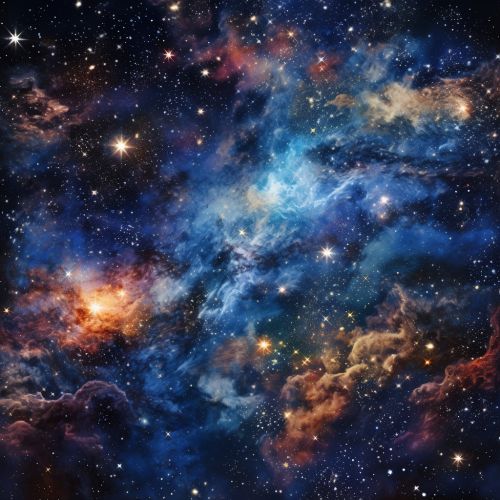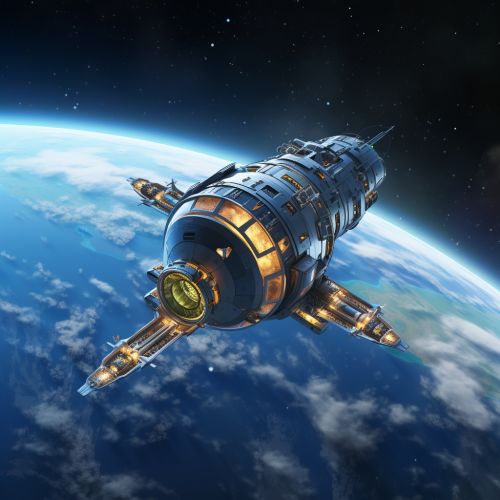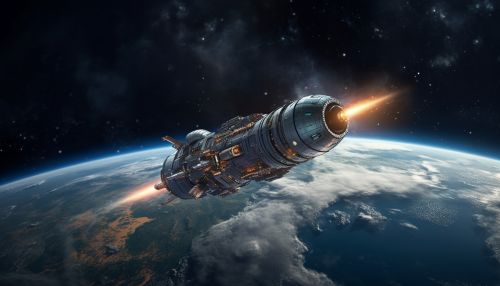Space
Introduction
Space, also known as the cosmos, is the vast, seemingly infinite expanse that exists beyond the Earth and between celestial bodies. Space is a vacuum, meaning it is almost entirely empty of matter, but it is also the location of everything that exists in the universe, including our planet, the stars, galaxies, and all other forms of matter and energy.


Understanding Space
The concept of space is a fundamental component of various physical and philosophical theories. It is considered one of the few fundamental quantities in physics, meaning it cannot be defined via other quantities because there is nothing more fundamental presently known. Thus, similar to the definition of other fundamental quantities (like time and mass), space is defined via measurement. In the International System of Quantities, space is a three-dimensional structure represented by three real numbers.
The concept of space is considered in physics and philosophy, including classical physics, quantum physics, relativity theory, cosmology, and metaphysics.
Physical Space
In physics, space is a boundless three-dimensional extent in which objects and events occur and have relative position and direction. Physical space is often conceived in three linear dimensions, although modern physicists usually consider it, with time, to be part of a boundless four-dimensional continuum known as spacetime.
Classical Physics
In classical physics, space is a three-dimensional arena that absolutely exists, independently of any particular object or observer. The concept of space was fundamental to the development of classical mechanics.
Quantum Physics
In quantum physics, space is a three-dimensional arena that does not have a definite state until a quantum event occurs, which is a departure from classical physics. This is related to the concept of superposition and the uncertainty principle in quantum mechanics.
Relativity Theory
In relativity theory, space is combined with time into a four-dimensional manifold. The concept of a space-time continuum is fundamental to the theories of relativity, which describe space and time as interrelated aspects of a single entity known as spacetime. According to these theories, the concept of space depends on the specific type of measurement made: the measurements of length and time can change for observers in different inertial frames of reference, which are in relative motion.
Cosmological Views of Space
Cosmology, the scientific study of the large scale properties of the universe, studies the structure, origin, evolution, and eventual fate of the universe. This includes the study of the nature of space.
Big Bang Theory
The Big Bang theory, which is the prevailing cosmological model, describes space as having begun in a hot, dense state approximately 13.8 billion years ago. According to this theory, space has been expanding ever since, creating more space and moving galaxies further apart.
Cosmic Inflation
The theory of cosmic inflation, an extension of the Big Bang theory, proposes that a state of cosmic inflation occurred at approximately 10^-36 seconds after the Big Bang, in which space expanded at an exponential rate.
Dark Energy and the Accelerating Universe
Observations of distant supernovae have suggested that the expansion of the universe is accelerating, an observation attributed to dark energy's existence. Dark energy, in its simplest formulation, takes the form of the cosmological constant term in Einstein's field equations of general relativity, but its composition and mechanism are unknown and, more generally, the details of its equation of state and relationship with the Standard Model of particle physics continue to be investigated both observationally and theoretically.
Philosophical Views of Space
In addition to physical and cosmological concepts, space is also the subject of philosophical analysis.
Metaphysics
In metaphysics, a branch of philosophy, space is examined in the discussion of issues such as the relation of the mind and the body, the perception and representation of space, the exploration of questions about what space is, whether it is a real entity, whether it is continuous or discrete, whether it is substantial or relational, whether it is absolute or relative.
Phenomenology
In phenomenology, space is considered as the sphere of a person's life and activities. Phenomenologists regard physical space as being deeply connected with subjective consciousness, particularly with respect to the spatiality of the body.
Exploration of Space
The exploration of space is conducted both by human spaceflights (including the manned moon landing of the Apollo program) and by robotic spacecraft. While the observation of objects in space, known as astronomy, predates reliable recorded history, it was the development of large and relatively efficient rockets during the mid-twentieth century that allowed physical space exploration to become a reality.


Space Missions
The first human-made object to reach space was the V-2 rocket, which did so in 1944, towards the end of World War II. This was followed by the Sputnik 1, the first artificial satellite sent into space by the Soviets in 1957. The first successful human spaceflights were by the United States' Mercury program, followed by the Gemini and Apollo programs, culminating in the Apollo moon landing missions.
International Space Station
The International Space Station (ISS) is a habitable artificial satellite in low Earth orbit. It is the largest human-made body in low Earth orbit and can often be seen with the naked eye from Earth. The ISS consists of pressurised modules, external trusses, solar arrays, and other components. ISS components have been launched by Russian Proton and Soyuz rockets, and American Space Shuttles.
Space Telescopes
Space telescopes, such as the Hubble Space Telescope and the Kepler space observatory, have provided the ability to observe the universe in optical, X-ray and infrared wavelengths from above the Earth's atmosphere.
